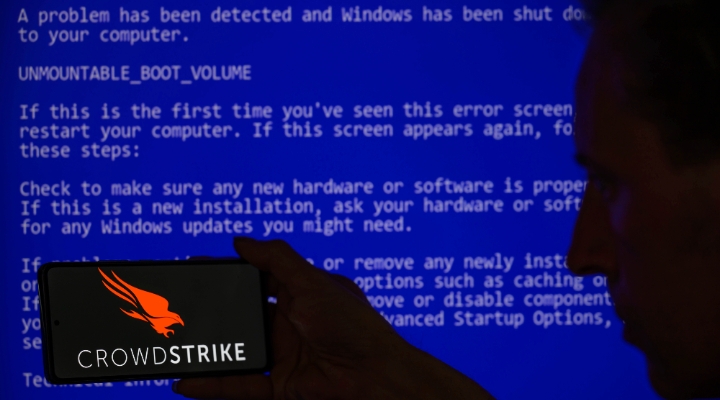
While global markets may gyrate over U.S.-China trade issues or tensions in the Middle East, Habib Subjally, senior portfolio manager and head, global equities at London-based RBC Global Asset Management (UK) Limited (RBC GAM), prefers to focus on finding global businesses with outstanding ideas and attractive valuations.
Motive: multiplication
“Philosophically, we want to invest in great businesses that multiply their capital and we want to transmit their wealth generation to our investors,” says Subjally. To do that, he focused on exponential efficiency from the ground up. “Great businesses take financial capital, human capital and intellectual capital and give you back multiples of what you put in. But a poor business takes that capital and destroys it,” says Subjally, lead manager of the five-star rated $1.6 billion RBC Global Equity Fund D.
A native of Karachi, Pakistan who earned a BSc in 1986 from the London School of Economics and trained as an accountant in Britain, Subjally switched to investment management in 1994. Subjally joined RBC GAM in 2014 and brought with him a 10-person global equity team from London-based First State Investments. He now heads a team of 12 analysts and researchers. “We need the right team with the right skills and culture and we need to efficiently identify these great businesses. There are hundreds that we can potentially invest in. But how do we identify those companies that are the very best ideas? That’s the challenge.”
RBC Global Equity Fund has about 50 names in its portfolio. However, Subjally and his team also manage a sister fund, the five-star rated $5.4 billion RBC Global Equity Focus, which is more concentrated and has about 35 names.
Launched in March 2014, RBC Global Equity Fund D has rewarded investors with 24.8% in 2019, versus 19.33% for the median fund in the Global Equity category. The fund has averaged 13.95% over five years versus 8.75% for the median Global Equity fund.
Introduced in April 2014, RBC Global Equity Focus Fund D returned 24.6% in 2019 and averaged 13.36% over the last five years.
All-in
Fully invested, and a bottom-up stock picker, Subjally has tended to find stocks in the financials, healthcare and consumer discretionary sectors which accounts for 21.3%, 16.1% and 13.8% respectively of the RBC Global Equity portfolio. However, Subjally points out these weights are a by-product of the stock selection process. In the same vein, country weightings are also a by-product of the portfolio construction process. Currently, about 54% of the portfolios are invested in U.S. names, with comparably much smaller holdings in countries such as Switzerland and Japan.
“We were underweight on information technology last year, with about 13% in the portfolio, or about four or five percentage points below the benchmark. But that didn’t hurt us. Superior stock selection meant that we were able to overcome that. If I’d known that technology would be so strong I wouldn’t have underweighted it,” says Subjally.
“That’s the thing: calling sectors is really hard. All we have to do is call the stocks. We are obsessive about investing in great wealth-creating businesses,” adds Subjally. “And that wealth creation mechanism is so powerful that even when you end up with a small underweight in a strong sector or a small overweight in a poor sector then superior stock selection should be able to offset that.”
Don’t always buy good news on a quarterly basis
Subjally and his team are constantly on the look-out for future success stories. And part of that process is a focus on a company’s so-called extra financial assets or liabilities. “Let’s look at the liability side. A chief executive can boost short-term profits by borrowing from the future and cutting R&D. If you cut R&D to zero tomorrow, your short-term profits go straight up,” says Subjally. “Not only that, your margins, cash flow and return on invested capital looks better. Any algorithm will give the impression that this is a really good CEO because they improved all these financial factors. But I would argue that the only reason that short-term profits have gone up is that he’s created extra-financial liabilities. In a few years' time, this business won’t have any new products to sell—and eventually, it will lose its ability to compete and will be a less valuable business.”
In the same way, a business might borrow from its employees by cutting training budgets and profits will go up—in the short-term. “Financially, it looks like a much better business. But it will take employees a while to figure out that they are not developing or progressing. Over time, the best employees will leave or become unmotivated and productivity will fall,” says Subjally. In short, all these cost-cutting measures only create extra-financial liabilities.
“But there are businesses that invest in their employees and their customers and suppliers. This will cost in the short-term. Profits may be below what they might otherwise be. But they have created contingent assets: an R&D pipeline, engaged employees and support from their suppliers and the local community. These businesses will be more valuable in the future,” adds Subjally.” This is the way we think about businesses. We are happy for them to have lower than otherwise short-term profits---as long as they are always thinking about long-term value creation.”
One top name common to both funds is Danaher Corp. (DHR), a U.S.-based diversified conglomerate with interests in environmental and healthcare sectors. In Subjally’s view, the company has a unique management team that uses the Danaher Business System (DBS) which looks for ways to reduce costs by using fewer materials, for example, which in turn is modelled on the Japanese Kaizen model of continuous improvement.
Precision pays
“They measure everything. Then they start to make improvements in their systems. In the industrial world, where you make commoditized products, and if you have cost leadership, then you get a lot of volume,” says Subjally, adding that Danaher also has close relationships with their customers who purchase the company’s water filtration systems, for example. “They also focus on building leadership and having the right culture to think long-term rather than short-term. DBS made us think about Danaher’s extra-financial assets, such as their people and long-term focus.”
Significantly, Danaher has expanded into the healthcare sector by investing in blood-count machines and gene-sequencing. “The focus on listening to their customers and innovation has taken them from being an industrial company to a health-care company. It’s been an excellent performer in the stock market. We still think there is a lot more to come,” says Subjally, noting that the firm is in the process of buying a part of GE Corp.’s health-care division.
“We see big growth prospects.” The stock is trading around US$164, versus US$65 in 2015. The stock trades at about 35 times forward earnings. Based on discounted cash flow models it has at least 20% upside. However, determining the time frame is uncertain. Yet Subjally remains optimistic—and patient—that the stock will reach its upside target. The average holding period for stocks is 4.5 years.
Another long-term top holding is AIA Group Ltd. (1299), a major Hong Kong-based insurance company that emerged from the ashes of American International Group Inc. or AIG. “There is a whole new management team and it has skin in the game,” says Subjally, noting the firm operates across Asia in countries such as Singapore, China, and India.
A long runway for insurance ahead
“Most of these countries don’t have social security and a rapidly growing middle class. Someone who lives from paycheque to paycheque, and has to make payments for a car loan or private school, also has to worry about unemployment or falling sick,” says Subjally, adding that the firm has an army of financial advisors and also sells its products through leading banks in the region. “That’s where AIA comes in: they offer very low-cost policies that are designed to protect against death, illness and unemployment. AIA has a great business model and the end-market is growing very quickly. There is a big unmet need for their products. Most important, the management team has a very long-term time horizon.”
The stock is currently HKD83 and trading at 20 times forward earnings.





















